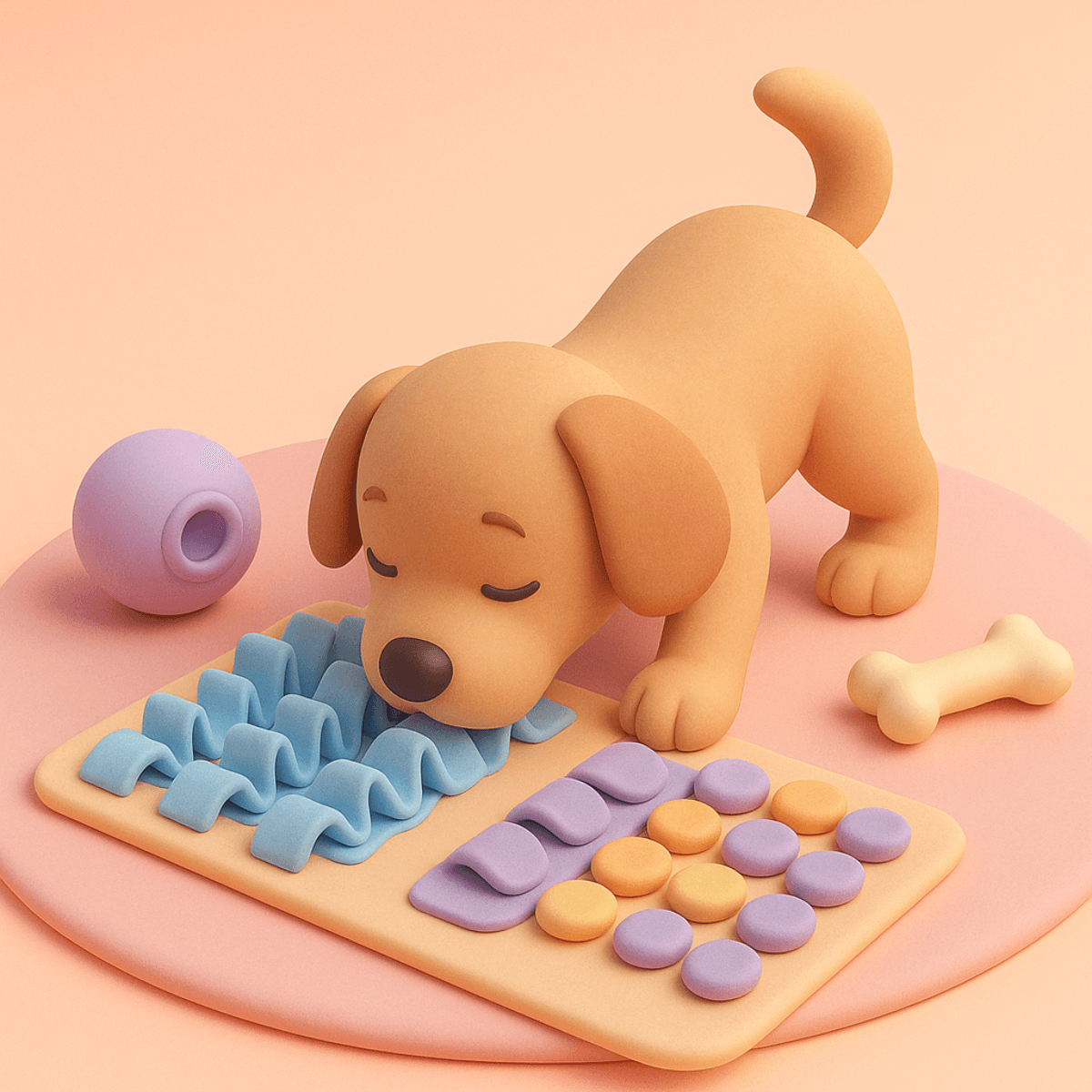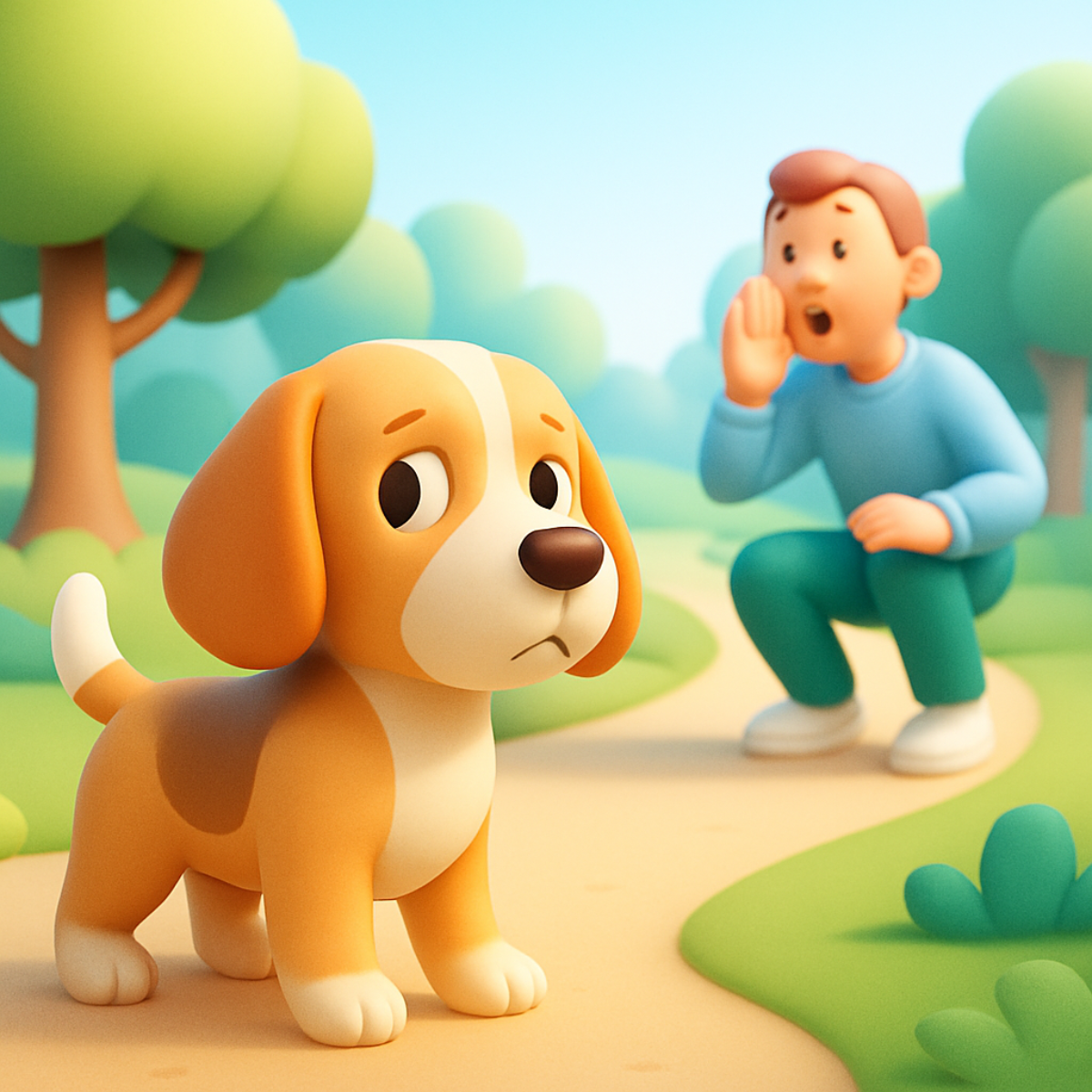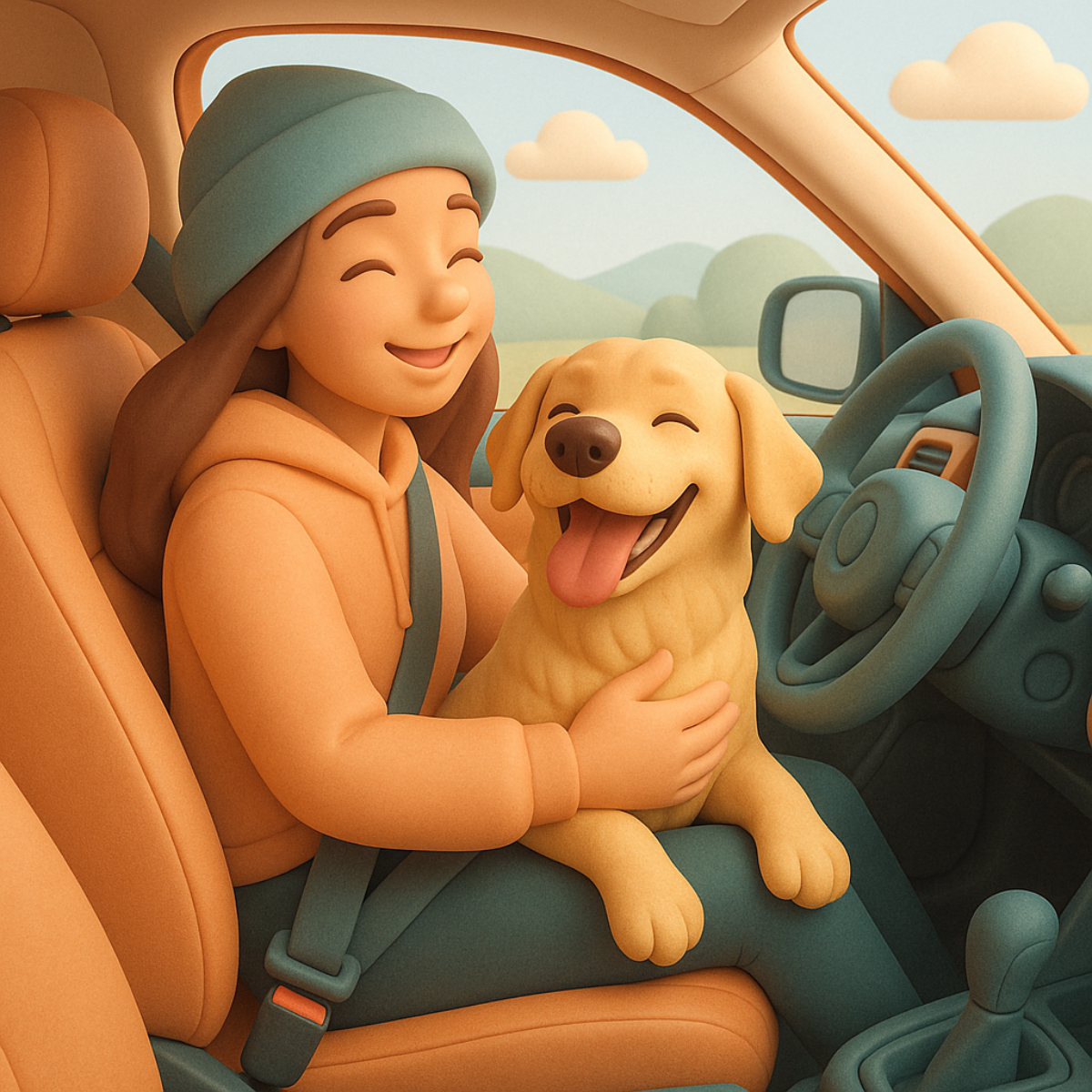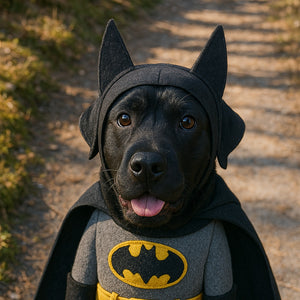
Smell games – therapy for a dog's mind and emotions
The Healing Power of a Dog's Nose
Anna anxiously observed her adopted dog, Leon, a timid, sad-eyed mixed breed. Every noise made Leon tremble, and he relieved his stress by destroying the sofa cushions. One day, a behavioral trainer advised her to try scent games. After just a few sessions of sniffing for treats, Leon began to change beyond recognition. Instead of nervously pacing the house, he eagerly dived his nose into the sniffing mat, searching for hidden treats. After this "nose gymnastics," he was noticeably calmer – his tail wagged more confidently, and he fell into a blissful sleep. This transformation isn't magic, but rather the result of the powerful influence of sniffing on his canine companions. In the following article, we'll describe how scent games for dogs act as behavioral and emotional therapy, backed by current scientific research. You'll learn why nasal activity is crucial for a dog's health and how it affects their emotional world. You'll also learn about specific tools, like the Petto Sniffing Toy for Dogs , that help with daily stimulation and therapy for our four-legged friends. Get ready for an engaging story about canine noses, stress, confidence, and the happiness hidden in scents!

A dog's sense of smell – a superpower that calms
It's common knowledge that dogs live in a world of smell. Their sense of smell is incomparably more sensitive than ours —it's estimated that the average dog's nose can be 10,000 to 100,000 times more sensitive than a human's. To illustrate this difference, Dr. Jesen Nappier used a graphic analogy: a dog can smell half a teaspoon of sugar dissolved in a giant Olympic-sized swimming pool! The physical capabilities of a dog's nose are astonishing—these animals have approximately 300 million olfactory receptors (compared to only ~6 million in humans) and devote a vast portion of their brain to analyzing odors (the area of the brain responsible for smell is about 40 times larger in dogs than in humans). In short, a dog perceives its surroundings through its nose just as we do with our eyes and ears.
This biological advantage translates not only into tracking abilities but also into a dog's emotions. Sniffing is a natural behavior for dogs, providing a sense of purpose and security. During a walk, rich in opportunities to freely sniff the area, dogs read the scent "messages" left by other animals—who passed by, their mood, whether the area is safe. This allows them to gain a better understanding of the world and feel more confident. As trainer Kris Whipple so vividly describes, "sniffing" (walking for sniffing) provides the dog with important information about the environment, building a sense of security and leading to calm . Instead of fear of the unknown, dogs explore the surroundings through their noses and become familiar with them on their own terms.
Moreover, sniffing itself has a calming effect on a dog's nervous system. When a dog sniffs, something extraordinary happens physiologically: the parasympathetic nervous system , responsible for the body's "rest and digest" state, is activated. In other words, sniffing helps shift a dog's body from arousal mode to relaxation mode . Just a few minutes of intense sniffing can calm a dog's heart rate, slow its breathing, and release happy hormones in the brain. Research by Budzinski and Budzinski (2019) showed that when a dog is allowed to sniff freely, its heart rate drops, blood pressure decreases, and dopamine (the pleasure hormone) levels increase . It's as if a dog's nose is sending a signal to the brain: "It's okay, you can relax." By comparison, chasing a ball or playing fetch tends to activate the arousal mode (sympathetic nervous system), while calm sniffing has a soothing effect, like a session of dog yoga.
It's no surprise, then, that nasal activity is crucial to a dog's well-being . Providing a dog with the opportunity to use its most important sense directly impacts its mental health. Frustration stemming from a lack of opportunities to sniff (e.g., constantly walking on a leash without sniffing) can lead to increased stress and behavioral problems. Satisfying the need to sniff enriches a dog's emotional world —it gives them the joy of discovery, a sense of instinctual fulfillment, and a natural way to relieve stress. In the following sections, we'll explore how scent play utilizes these properties of a dog's nose, becoming an effective tool in behavioral and emotional therapy.
What are olfactory games and how do they work?
Nose games (also known as nose games ) are any activity that involves engaging a dog in using its sense of smell to find hidden objects, treats, or simply explore scents. In practice, these can range from very simple mind games—from the homemade "find it" (the command "search!" after hiding a treat in a room) to more complex toys and scent mats designed specifically for this purpose. The idea is always the same: allow the dog to use its nose to earn a reward or discover something interesting.
The key is that in these games, the dog focuses on sniffing rather than visual or auditory stimuli. This makes a huge difference for the dog – it can fully utilize its potential, which is rewarding. Sniffing works like solving a puzzle for the dog: it forces intense mental work , which can be more tiring than a long walk, but it's a positive , soothing experience. As the Petto product description puts it, sniffing mentally tires the dog in a positive way, while also calming it down and building its confidence . From a behaviorist's perspective, sniffing games combine mental stimulation with elements of training the dog's natural instincts.

There are many nosework accessories available on the market, from popular nose mats with fabric fringes to plush toys with hidden pockets for treats. The latter is particularly interesting because it combines a cuddly toy with a nose game. An example of such a toy is the Petto – Croissant Sniffing Toy , designed in the shape of a charming croissant. It looks inconspicuous, but it contains cleverly sewn-in pockets for storing dog treats. Petto – a snood toy in the shape of a croissant with hidden pockets for treats. When a dog detects the aroma of treats emanating from the plush croissant, it unleashes its full exploration nature – sniffing, scratching, prodding the toy with its paw and muzzle, figuring out how to retrieve the hidden treasure . This type of play engages the dog's nose, brain, and body simultaneously, providing a healthy dose of mental and physical stimulation. As a result, the dog not only satisfies its tracking instincts but also has great fun and calms its emotions. Owners praise these types of toys for being able to tire out dogs better than an hour-long walk , especially in inclement weather or when time is limited. Importantly, snood toys are safe even for puppies and older dogs – the dog self-administers the exercise, and the soft toy doesn't strain joints. That's why incorporating such games into a dog's daily routine is sometimes called sniffing therapy .
In short, nose play is more than just fun: it's a natural behavioral therapy that cleverly harnesses an ancient canine superpower (smell) to address modern challenges (stress, anxiety, boredom). Now let's take a more specific look at the therapeutic benefits of nose play and what research supports.
Sniffing is a cure for stress and anxiety
The first and perhaps most important reason why nose games have been dubbed canine therapy is their remarkable effectiveness in reducing stress . Many owners notice that after a nosework session, their dogs are calmer and more relaxed – now we know this isn't a coincidence, but rather a biological effect. Research and observations by behaviorists confirm that nose work lowers stress hormone levels and stimulates the release of "happy hormones" in dogs. As mentioned earlier, the mere act of engaging the nose triggers a "rest and digest" response in dogs, the opposite of the "fight or flight" response. This is why offering a game of finding treats to a nervous, agitated dog can work wonders – the dog focuses on the task at hand, and its physiology shifts to a calming mode.
Importantly, sniffing can also help anxious and reactive dogs in situations that normally trigger anxiety. Trainers often use the "sniffing distraction" technique—for example, when a stressful stimulus appears on the horizon (an unfamiliar dog, fireworks, a crowd), the handler scatters a handful of treats in the grass and encourages the dog to search. This not only distracts the dog from fear but also sends positive signals through the nose : "Here's food, you can do something pleasant." In this way, sniffing replaces panic . As trainer Jennie Murphy describes, dropping treats on the ground at a safe distance from the anxiety-triggering stimulus redirected her reactive dog's attention downward; sniffing activated the search system and brought positive emotions instead of fear . Regular repetition of this exercise causes the dog to associate previously fearful situations with something pleasant (searching for food), and its reactivity gradually decreases . It's like behavioral therapy where the role of the therapist is played by... a few spilled treats and the dog's own nose.
Nosework is also used to reduce stress associated with vet visits or grooming procedures. A simple example is playing "find it" in a veterinary waiting room – by allowing your dog to sniff and eat scattered pieces of food, you distract them from potentially stressful stimuli (unfamiliar clinic odors, barking dogs) and reduce their stress levels . Behaviorist Rachel Rodgers notes that sniffing can lower dogs' heart rates, blood pressure, and anxiety levels, which is especially valuable for nervous patients in veterinary clinics . She adds that simple sniffing exercises combined with food (e.g., searching for pieces of cheese on the floor) trigger the dog's "rest and digest" response , making it easier for them to calm down than if we were to force them to obey "sit." This is a valuable tip for all owners – it is better to encourage a stressed dog to sniff rather than correct it with commands , because the nose will cope with stress faster than discipline.

What does the science say? A growing body of research confirms trainers' subjective observations. In 2018, Charlotte Duranton and Alexandra Horowitz conducted an experiment comparing the effects of nosework on dogs' mood with those of regular obedience training. They found that dogs participating in nosework games exhibited a significantly more optimistic attitude (positive cognitive bias) than dogs trained only on "heel" commands . In practice, this means that nosework improved dogs' well-being—making them less pessimistic about ambiguous stimuli, suggesting a reduction in chronic stress levels. Other studies on environmental enrichment for dogs in shelters have shown that introducing scent stimuli significantly reduced signs of stress in confined dogs . For example, in an experiment by Binks and Montrose (2018), shelter dogs barked less, paced less, and relaxed more when pieces of cloth infused with the scent of coconut, vanilla, ginger, or valerian were placed in their kennels. Furthermore, the dogs were more likely to fall into a restful sleep when exposed to the scent of coconut and ginger, whereas without the scent stimulation, they showed typical signs of boredom and anxiety. This demonstrates that the nose may be key to calming dogs even in challenging environments.
Sniffing games, as a form of anti-anxiety therapy, have the advantage over other methods in that they are natural and enjoyable for the dog . They don't require the dog to confront what scares it—on the contrary, they allow it to bypass fear by directing its energy toward something instinctively enjoyable (sniffing food). For a fearful dog, each such session is a step toward greater confidence and a reduced stress response. This is why many behaviorists recommend starting with a fearful dog with simple sniffing games before moving on to traditional training or desensitization. The nose becomes a therapist , first calming the dog and only then, with a clear mind, allowing it to learn new things.
Building confidence and trust through nosework
Another huge benefit of nose play is boosting self-confidence in shy, timid dogs . Imagine a dog that, at the sight of an unfamiliar object, tucks its tail under itself and retreats – a classic lack of self-confidence. Incorporating elements of nosework into its life can truly transform this. Why? Because we're providing the dog with a task it's truly good at , allowing it to succeed and feel proud of its achievements. Even an insecure dog quickly discovers that sniffing and finding hidden treats is something it excels at – after all, its nose is second to none! Every cookie it finds... or rather, every cookie it obtains with its own nose, is a micro-victory for the dog, building its sense of competence.
Professional trainers admit that nosework can be a "sport for the shy." Unlike obedience shows or other competitions, here the dog works primarily independently, with no social pressure or direct competition—the conditions are controlled so the dog can focus on finding the scent. This allows even reactive dogs or those who are sensitive to strangers to participate in such activities (for example, during K9 Nose Work training, often only one dog works at a time, with the rest waiting at a safe distance). Success in nosework translates into a dog's overall confidence . Debra M. Eldredge, a veterinarian and trainer, notes: "nosework increases confidence in anxious dogs." When a dog learns that it can solve a "scent puzzle" on its own and is praised and rewarded for doing so, it grows in self-confidence. This confidence then transfers to other areas of life—from bolder exploration of new places to calmer reactions to strangers.
Sniffing also helps build trust in the owner . Sniffing games are often a team activity between dog and human – the owner hides treats, encourages the dog to search, supports it with a calm voice, and celebrates its successes. During this time, positive communication develops between them. The dog learns to rely on the human's guidance (because it's the human who organizes the fun game), and the human learns to better read the dog's signals during sniffing. As a result , the bond and mutual trust are strengthened . Nosework offers a unique opportunity for cooperation, where there are no strict commands – instead, there's a partnership in exploring the world of scents. This is especially valuable for dogs who have experienced trauma (e.g., adoption) and have lost trust in people. Through positive olfactory experiences with their owner, they can gradually rebuild that trust.
It's worth noting that nosework not only boosts a dog's confidence but also teaches problem-solving . Dogs practice coping with obstacles (literally and figuratively)—for example, they have to figure out how to get to a scented scent in a box or climb onto an unusual surface where a treat is coming from. In controlled, unpressured conditions, dogs try new strategies and learn that challenges can be overcome . The next time they encounter something unfamiliar in their daily lives, they'll have the experience of nosework in their "mental muscle memory": "I coped with it then, I can cope with it now." This is why many behaviorists incorporate elements of nosework into their therapy for fearful dogs—it's a natural way to train courage .
Fighting boredom and destructive behavior
A bored dog is often a troublesome dog. Excessive, wasted energy and a lack of mental stimulation quickly lead to destructive behavior (chew furniture, digging up the garden, running away) or other problems, such as excessive barking or obsessive paw licking. Unfortunately, many owners forget that physical fatigue isn't everything—dogs also need mental fatigue to feel fulfilled. This is where scent play comes into play again, as an ideal tool for releasing a dog's energy in a constructive way .
Sniffing engages a dog so intensely that it can positively "pump him out." It's not without reason that the saying goes, "A dog tired of sniffing is a well-behaved dog." While searching for scents, the brain, senses, and often the body are engaged as well (the dog moves, digs, digs through mats, etc.). Just 10-15 minutes of nosework can equal an hour of running in terms of fatigue, and it doesn't overstimulate like an intense chase. This is great news for owners who have limited opportunities to exercise their dog—for example, due to bad weather or a lack of time that day. Instead of leaving the dog to its own devices (which often ends with them finding a "job" in the form of chewing shoes), we can treat them to a treasure hunt session indoors. The dog will get a mental workout and then go to bed happy.
Importantly, such activity counteracts boredom before it develops into undesirable behavior. As nosework trainers emphasize, scentwork provides dogs with intense mental stimulation, helping to prevent boredom and the resulting destructive behavior . Instead of seeking occupation through destruction, dogs have a "legitimate" activity that satisfies them. Many dogs who previously destroyed objects in the house when their owner was away calm down significantly after introducing daily scent play. The excess energy stored in the body and the frustration of not having a task disappear – because the dog has already had its "hunt" for treats, has exhausted itself, and is simply resting.
Sniffing games can also be cleverly used to entertain your dog independently , teaching them to keep themselves occupied for a while. For example, before leaving the house for work, you can hide several servings of dry food in various corners or on sniffing mats. It will take several to several dozen minutes for your dog to find and eat everything – and that's the start of a healthy nap instead of howling with boredom at the door. A dog with a task to complete feels its owner's absence less and experiences less stress. Nosework becomes an ally in preventing separation anxiety and other problems related to boredom.
In the context of young and very active dogs, scent play is sometimes called a "turbo switch." When a puppy or young dog gets "hyped" to the point of mischief, it's a good idea to switch them to sniffing mode. You can scatter a handful of treats on the lawn or give them a sniffing toy filled with food – the dog will quickly transition from jumping and biting to sniffing and trying , which is a much calmer activity. This way, we teach the dog self-regulation: when you feel like you have too much energy, instead of venting it on my slippers, go get the sniffing mat and look for some food. This really works – many dogs, after a while , demand sniffing play when they're bored. Instead of destroying the house, they'll fetch the sniffing mat or scratch in the cupboard where the treat toys are kept. This signals, "Guardian, I need a nose job!" A wise owner will take advantage of this request and redirect the dog's energy in the right direction.
In short, nosework is an excellent cure for boredom . It provides your dog with a natural activity, positively exhausts it, and leaves it feeling content. From a behavioral preventative perspective, regular nose play can prevent many problems—from damaged furniture and hyperactivity to anxiety disorders resulting from frustration. Instead of treating the consequences later, it's better to provide your dog with "mental hygiene" early on through a daily dose of sniffing .
Who are olfactory games particularly recommended for?
Every dog, regardless of breed, age, or temperament, can benefit from nose play . It's a universal activity and easily adapted to the dog's individual needs. However, there are certain groups of dogs for whom nose work provides exceptional benefits—often even becoming a part of their therapy or daily routine, improving their quality of life. Here are the dogs for whom nose play is particularly recommended:
- Fearful, shy, and reactive dogs – as we've already described, nosework has a soothing and uplifting effect on these dogs. It provides them with a distraction from anxiety, boosts their confidence, and allows them to achieve success without stress. For a fearful dog, nosework provides a safe space where they're not overwhelmed, while also learning new things. Regular nosework training is often part of behavioral therapy for fearful dogs – it helps break the cycle of fear through positive experiences with their nose.
- Dogs adopted from shelters and those who have been through a rough patch often have negative experiences, lack socialization, or simply need time to adjust to their new home. Sniffing games are an excellent way to build a bond with their new owner (a shared, enjoyable activity) and to decompress from the stress of the shelter. Many shelter volunteers use sniffing mats to make their kennels more enjoyable and reduce their arousal levels – the dogs sniff instead of barking and pacing. For a dog who has been through a rough patch, sniffing also represents a return to something natural, something that isn't associated with anything negative , and in fact, provides a sense of normalcy in a new environment.
- Senior Dogs – Older dogs often can no longer afford intense physical activity due to joint problems or a general decline in strength. This doesn't mean, however, that they don't need stimulation! On the contrary, mental training is crucial for seniors to maintain cognitive performance and prevent boredom, which leads to depression or problem behavior. Sniffing games are ideal for seniors because they provide them with brain-engaging activities without taxing their bodies. Even dogs with senile dementia can enthusiastically come back to life when given a simple food-finding game (their sense of smell often remains in good shape for a long time). Furthermore, nosework is a pastime fully adapted to the abilities of an older dog – they choose the pace themselves, and tasks can be made easier (for example, by hiding treats in shallow hiding places). As senior dog experts point out, scent play is a wonderful way to enrich the lives of older and even sick dogs – it allows them to stimulate their minds without straining their bodies, thus improving their well-being and may slow down the effects of cognitive aging.
- Dogs recovering (after surgery, injuries, illnesses) – one of the biggest challenges with such a dog is ensuring physical rest while avoiding boredom. A dog that feels better but can no longer run or play like before often becomes frustrated and tries to "break" the doctor's orders. This is where nose games come in handy – a great way to tire out a dog that has to limit its movement . Nosework allows you to burn off energy and vent frustration without the risk of the dog tearing stitches or re-injuring itself. Of course, the form of play should be adapted to the vet's recommendations (e.g., avoid jumping when hiding scents high), but in most cases , veterinarians favor nosework as a safe activity for convalescents . Additionally, sniffing can distract the dog from any pain or discomfort – the dog focuses on the task, which has a slightly analgesic effect (a mechanism similar to occupational therapy in humans).
- Hyperactive and working dogs – although it may seem like quicksilver dogs primarily need exercise, it's often mental fatigue that calms them down the most . Nosework works well as a calming activity before bed or as a transition from activity to relaxation after training. Many sports dogs (agility, flyball, etc.) have trouble "switching off" at home – adding 10 minutes of nose play after an intense workout helps them unwind. For physically active dogs, nosework is an attractive distraction – they use their heads instead of their muscles, which develops them comprehensively and prevents burnout from the monotony of one type of training.
As you can see, almost every dog will benefit from nose play , but these groups in particular can experience a dramatic improvement in their quality of life. Importantly, nose play has no breed or size restrictions – from Chihuahuas to Great Danes, every dog has a nose and knows how to use it. Even dogs with disabilities other than smell (e.g., deaf or partially blind) can successfully participate in nose play – for them, it's often the only area where they feel 100% functional. It's also worth noting that nose play is a great way to enrich their lives for cats (though that's a topic for a separate article) – they also have an excellent sense of smell and enjoy searching for food.
Nose to a better life
Leon's story at the beginning of this article is no exception – thousands of owners have discovered that dogs truly heal through their noses . Sniffing games have proven to be the missing link, connecting a dog's behavioral needs with simple solutions within every owner's reach. It's therapy that entertains , and play that heals . Sniffing has a multifaceted effect on a dog: from physiologically calming the nervous system , through lowering stress hormones , to emotional and intellectual strengthening . It provides an outlet for energy, a sense of achievement, and strengthens the bond with humans. And above all, it's a source of immense joy for a dog, because what could be more enjoyable for our four-legged friend than doing what he was created for?
As owners, we can draw on this knowledge to the fullest. Instead of wondering how to discipline a dog for misbehavior stemming from boredom or anxiety, it's better to prevent it by offering it a daily dose of sniffing. It doesn't take much effort: a handful of treats thrown into the grass, a few shoeboxes with holes filled with a treat, or a plush Petto nose ring filled with treats are all you need. The results may pleasantly surprise you. A dog tired of nose work will sleep peacefully through the night, a dog calmed by searching for treats won't panic at the noise outside, and a dog confident after finding a "treasure" will more easily cope with new challenges.
Finally, it's worth emphasizing that nose games are also great fun for us humans . Watching a dog "work" is very satisfying – we'll see the sparkle of interest in their eyes, the wagging tail, and the pride when our friend finds the last hidden morsel. It's also a lesson in patience and attentiveness for us, as we need to adapt to the dog's rhythm of exploration. Shared nosework sessions can become a favorite ritual for the whole family, engaging children in hiding treats or inventing new hiding places.
A dog's nose is a treasure worth utilizing for our pet's benefit. By playing sniffing, we open the door to a world of scents full of challenges, but also a sense of security. We give them their dream job—one in which they're always a winner and for which there's always a reward. This play therapy results in a happier, healthier, and more balanced dog . And that's exactly what we want—for our four-legged friend to feel loved, fulfilled, and understood. Sometimes, so little is enough... just let them sniff —their brilliant nose will do the rest.
📚 Additional materials
🧠 The influence of olfactory play on a dog's emotions
-
Let me sniff! Nosework induces positive judgment bias in pet dogs – Duranton & Horowitz (2018)
The study found that regular sniffing games improved dogs' moods, making them more optimistic. -
Allowing Dogs to Sniff Helps Them Think Positively – Psychology Today
This article discusses how allowing dogs to sniff has a positive impact on their emotional state.
👃 Anatomy and the Power of a Dog's Sense of Smell
-
How Your Dog's Nose Knows So Much - PBS NOVA
An educational video demonstrating the complexity and effectiveness of a dog's nose. -
Dogs Sense Of Smell Vs Humans – Vet Explains Pets
A comparison of the olfactory abilities of dogs and humans, highlighting the advantage of dogs in this area.
💆♂️ Smell games as a stress-reducing therapy
-
Scent Work Helps Anxious Dog Overcome Her Fears – American Kennel Club
The story of a dog who overcame his fears thanks to scent work. -
Nose Work is Great Exercise for Dogs! – Whole Dog Journal
An article discussing the benefits of olfactory play, both physical and mental.
🧓 Sniffing games for senior dogs
-
Enrichment for Senior Dogs – Veterinary Partner (VIN)
A guide to environmental enrichment for older dogs, including scent play. -
14 Mentally Stimulating Activities to Keep Your Senior Dog Happy and Engaged – Epic Dog Tales
A list of activities that help keep senior dogs mentally fit.
- 🏙️ Best dogs for apartments – breed ranking
- 💬 How Do Dogs Show Affection? Signals You Should Know
- 🐕 Is your dog pulling on the leash? Find out how to fix it.
- 🚗 How to safely transport a dog in a car?
- 🐾 How to teach your dog to stay home alone
- 🛏️ Can a dog sleep in bed with its owner? Facts, myths, and behavioral advice.
See more at: Petto.com.pl
























 https://petto.com.pl
https://petto.com.pl